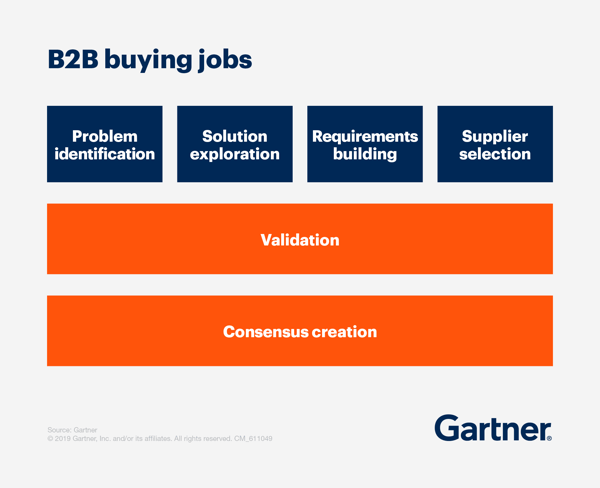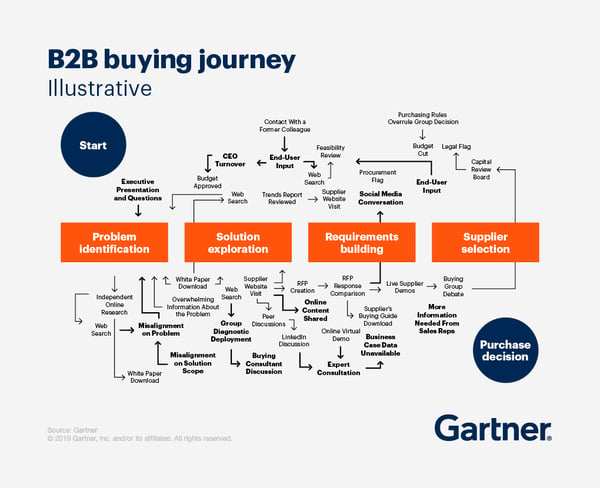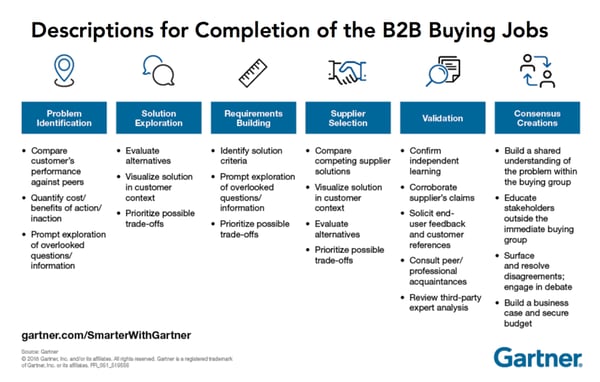As salespeople, we want to do everything we can to move deals in the pipeline. That's why we like it when buyers move fast. When they do, we see conversion rates and pipeline velocity increase.
So how can we help buyers move fast? By understanding how they buy!
In this blog post, we will discuss the stages of the buying process and give actionable advice for moving buyers through those stages quickly and efficiently.
Ready? Set? Let’s go!
Why deals progress at the buyer's pace (and why that's a good thing)
Let’s start by thinking about it from the buyer's perspective.
They're the ones who are making the decision to buy, which means they need to be comfortable with the product, the price, and the terms of the deal. If they're not comfortable, they're not going to buy. It's as simple as that.
The buyer is the one in control, so they get to dictate the speed of the deal.
There's one attitude Jeff Bezos, the billionaire chief executive of Amazon, attributes to everything he's accomplished in his life. He sums it up like this:
'Slow is smooth, and smooth is fast,'
It's an old military training proverb used by special ops teams and firefighters around the world. But the wisdom applies to the B2B buying jobs we know so well too. Time pressures, coordinated team decision-making, and situational complexity mean that while the exact process is different for every organization, there are some commonalities that matter and we can all agree on.
Every buyer is trying to solve a problem, and they're trying to do this as efficiently as possible. This means that they will go through a process of research, evaluation, and decision-making to find the best solution.
As salespeople, we sometimes want to shortcut this process. We see a buyer who is interested in our product and we want to move them straight to a decision. However, this is not how buyers buy.
If we try to shortcut the process, we will only end up frustrating the buyer and slowing down the sale. To go faster, we need to understand the buying jobs and remove barriers slowing our buyers down.
Let’s have a look at how.
Understanding the buying jobs
The average B2B purchase comes with hair-raising risks attached. That’s why buyers need to be certain their choice is worth the price tag, delivers value, and does not flop.

To guide this quest, they have 6 jobs to complete.
- Problem identification
- Solution exploration
- Requirements building
- Supplier selection
- Validation
- Consensus creation
All six of these can be considered a team sport, but the last two require a special kind of “the planets have aligned” coordination.
Why are they so tricky to get right? Well, firstly, because when large buying groups are involved (an average of 6.8) – consensus is anything but easy.
Secondly, each buying job is revisited when new information arrives. This is the true challenge of B2B buying.
And that’s where we come in. To help them get unstuck.
In the Chief Sales Officer update, Gartner found the most common reasons buyers get stuck: incomplete or inaccurate information, lack of clarity on business objectives, and conflicting priorities.
All of these lead to what they call a “spaghetti” mess of a buying journey.

So to help buyers buy, less is often more.
We don’t need to drown them in information, we just need to give the right information at the right time. This way, they can move through the process quickly and efficiently without getting stuck. And they’ll trust your information more.
Speeding up the buying jobs
Let's talk speed.
There are a few things salespeople can do to facilitate a smooth and fast purchase:
- Do your homework: Understand the buyer's business and their specific challenge. The more you know, the better you can help them.
- Be a trusted advisor: Build relationships with buyers and be someone they can rely on for advice.
- Help them understand the options: Buyers need to understand all of the possible solutions to their problem, especially those relevant to a pandemic or a downturn. This includes your product but also other options they may be considering.
- Provide timely information: buyers need timely information to make decisions quickly. Make sure you're responsive to their inquiries.
So what does timely information look like?
The type of information buyers need will change as they progress through the buying process.

In the early stages, they'll be looking for general information about their problem and the possible solutions. As they move into the evaluation stage, they'll need more specific information about your product and how it compares to other options.
Staying relevant
To close more deals, salespeople need to stay relevant through every stage of the buyer's journey. This means providing the right information at the right time to help them navigate the risks most important to them.
When buyers are evaluating risks, they're looking for three things:
- The probability that something will go wrong
- The impact of that something going wrong
- How easy it is to fix the problem if it does go wrong
As salespeople, we can help buyers understand these risks by providing data and case studies. For example, if a buyer is worried about the implementation of our product, we can provide data on how long it took to implement for other customers.
We can also provide case studies of customers who had a successful implementation. By providing this information, we can help the buyer understand the risks and make a decision quickly.
NB: Staying relevant is about timing
You need to be able to share your content with buyers at the right time in order for it to be effective.
If you wait until the last minute, your content may not be relevant anymore. And if you share it too early, the buyer may not be ready.
That's why keeping a 'job completion' checklist of your own handy helps ensure the relevance, effectiveness, and shareability of your content. Here's the one I like to use:
Is it relevant?
- Does this content relate to the completion of a buying job?
- Is this a job where customers consistently struggle?
Is it effective?
- Is it clear, simple, and informative?
- Is the content easy for the customer to use quickly and effectively?
- Does it inform buyers of your important differentiators?
Is it shareable?
- Is it supplier-agnostic enough to be credible?
- Is it relevant to the majority of our buyers?
- Is it easily shareable among stakeholders?
Once this is done, and you’ve moved towards the sale, the final step is buying and implementing the solution. At this stage, buyers will need to buy the product and implement it within their organization. This is where we can help speed up renewal & referrals by providing a smooth and easy purchase process.
By helping buyers implement, we can ensure they're successful with our product. Which, of course, increases the chance of a renewal.
Final thoughts – smooth is fast
Once you've done all this, you'll be the most relevant salesperson in the room.
Buyers will remember you before the other salespeople they’ve spoken to, and because you’ve made their buying process faster, you’ll be able to sell faster too.
By understanding how buyers buy and then providing relevant information throughout their journey, salespeople can become more effective and close more deals. So stay in the buyer's shoes, do the homework, and provide timely information to help them make a good decision.
If you enjoyed this post, make sure to check out our in-depth article looking why buyer experience is the most important thing in sales.




